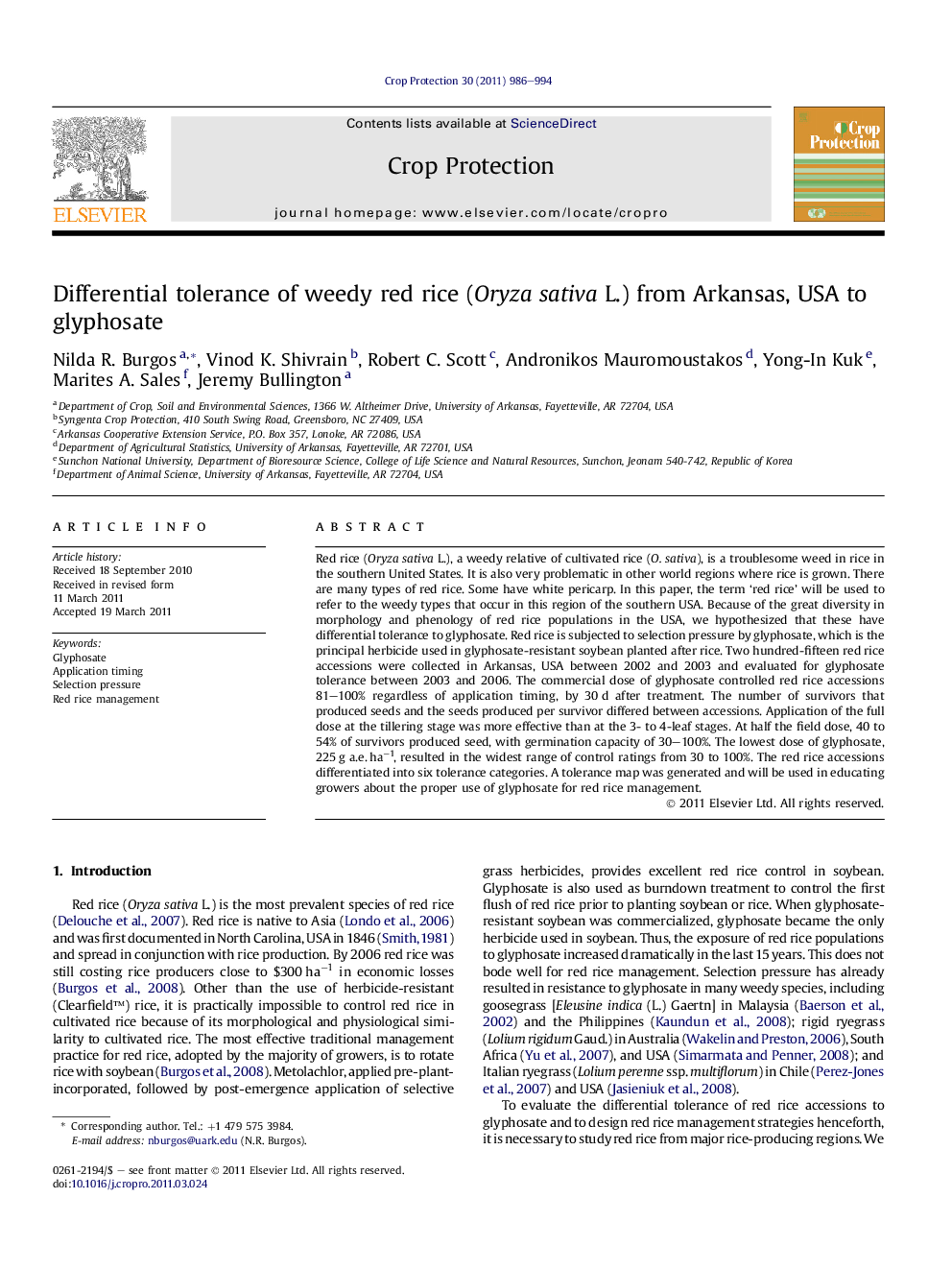| کد مقاله | کد نشریه | سال انتشار | مقاله انگلیسی | نسخه تمام متن |
|---|---|---|---|---|
| 4506759 | 1321328 | 2011 | 9 صفحه PDF | دانلود رایگان |

Red rice (Oryza sativa L.), a weedy relative of cultivated rice (O. sativa), is a troublesome weed in rice in the southern United States. It is also very problematic in other world regions where rice is grown. There are many types of red rice. Some have white pericarp. In this paper, the term ‘red rice’ will be used to refer to the weedy types that occur in this region of the southern USA. Because of the great diversity in morphology and phenology of red rice populations in the USA, we hypothesized that these have differential tolerance to glyphosate. Red rice is subjected to selection pressure by glyphosate, which is the principal herbicide used in glyphosate-resistant soybean planted after rice. Two hundred-fifteen red rice accessions were collected in Arkansas, USA between 2002 and 2003 and evaluated for glyphosate tolerance between 2003 and 2006. The commercial dose of glyphosate controlled red rice accessions 81–100% regardless of application timing, by 30 d after treatment. The number of survivors that produced seeds and the seeds produced per survivor differed between accessions. Application of the full dose at the tillering stage was more effective than at the 3- to 4-leaf stages. At half the field dose, 40 to 54% of survivors produced seed, with germination capacity of 30–100%. The lowest dose of glyphosate, 225 g a.e. ha−1, resulted in the widest range of control ratings from 30 to 100%. The red rice accessions differentiated into six tolerance categories. A tolerance map was generated and will be used in educating growers about the proper use of glyphosate for red rice management.
► The problem: Weedy rice is the most difficult-to-control weed in USA rice production.
► Rationale: Glyphosate is used to control weedy rice in the rotational crop or between cropping seasons.
► Hypothesis: Weedy rice accessions will respond differently to a sublethal dose of glyphosate.
► Results: Weedy rice accessions showed 30–100% foliar injury 30 d after treatment with 225 g a.e. ha−1 glyphosate.
► Conclusions: Differential tolerance to sublethal dose of glyphosate exists among weedy rice populations.
Journal: Crop Protection - Volume 30, Issue 8, August 2011, Pages 986–994